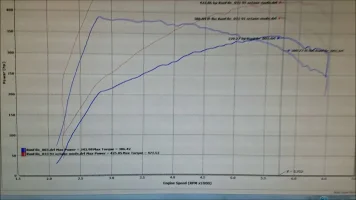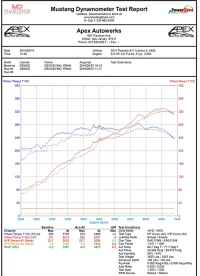KingLamoni
Active Member
So when I dyno my GTS should I have the test done in Drift mode?

So when I dyno my GTS should I have the test done in Drift mode?
You and me both, friend..All I know is that CHP means California highway pirates and I don't want those anywhere near my cars lol.
I recently found the PURE turbo upgrade and am very interested in it because it is a "bolt on".Seeing that the turbos on the car are smaller would also explain the PEAK TQ numbers down low. The compromise with that is that smaller turbos efficiency are in the lower end, and become less efficient at higher RPMs or speed. There is really where the PURE turbo upgrade or others could improve here. You would shift the power band to the right, lose lower PEAK power, but gain it on the top.
Looking forward to seeing where those aftermarket kits are heading.
I recently found the PURE turbo upgrade and am very interested in it because it is a "bolt on".
What I meant is they are a direct replacement for the factory turbos. The ECU I know will need remapped.Bolt-on how? You're going to need a flash tune for those, minimum.
What I meant is they are a direct replacement for the factory turbos. The ECU I know will need remapped.


Most videos I’ve seen with stingers on the dyno show the same or nearly the same hp and tq numbers between awd and rwdCorrect. A dyno measures whp (wheel horse power). "Typical" (hotly debated) drivetrain losses are something like 10-15% for FWD, 10-18% for RWD, 17-25% for AWD. Just roughly: a 3.3TT Stinger engine might have 400 hp when tested all by itself (removed from the car on a stand) - that's "chp" - crank horsepower. Chp is the number you see in all the magazines, manufacturer's claims, etc. It's obviously the higher number, so they'll quote that.
Using a 20% drivetrain loss (friction, etc) for an AWD Stinger, 80 of those hp get turned into heat, and there's only 320 hp measured at the wheels. An RWD Stinger might measure (400 - 10% = 400 - 40 = 360) 360 hp measured at the wheels. Of course, those are the "worst" and "best" cases. For the Stinger, it might be 15% RWD, 20% AWD so that the numbers are much closer. Or not. You'll get all kinds of debate over the "actual" number, and it's hard to know, because you'd have to remove the engine from the car to get the REAL chp value, THEN dyno it in a given car to get the whp value.
And each car might be slightly different due to manufacturing tolerances. If the typical Stinger has 390 chp +- 5% (min 370, max 410, roughly) and RWD losses between 10-13% and AWD losses 17-20%, then the worst combination - 20% AWD with 370chp = 296 whp. Best case, RWD 10%, 410 to start = 370 whp. The guy with 296 whp would complain he can't get the same 1/4 mile as everyone else, and the 370 whp guy would be declared a "factory freak". Yet they're both "within spec". They all got at least 365 chp, as advertised.

